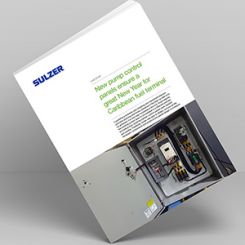Q. When selecting wetted pump parts, how much consideration should be given to the temperature of the pumped liquid? A. Handling liquids at temperatures below 32 F (0 C) or above 250 F (120 C) requires careful selection of the materials and corresponding attention to construction details. Many materials’ corrosion resistance or physical properties are affected by high or low temperatures. When selecting materials for temperature ranges, consult the applicable codes and practices of the industry in which the pump will be used. Pump material for low-temperature operations should be selected only after each component and its function have been considered. Many materials change from tough to brittle in cold temperatures. To start, when selecting a suitable ferric steel for low-temperature service, the user may consider a heat-treated, fine-grain, low-carbon alloy steel with low phosphorus, nickel and molybdenum, and of moderate hardness. This offers better notch toughness at low temperatures. Consideration should also be given to the austenitic stainless steels and bronzes for possible use in low-temperature pumping applications. Austenitic stainless steels, fully annealed, show improving toughness with decreasing temperature and exhibit no transition point. Most bronzes and all aluminum alloys are not embrittled at low temperatures and may also serve for this type service, if otherwise suitable for the application. Other considerations—cost, corrosion resistance, availability, erosion resistance, hardness, toughness and fatigue strength—must also be considered before final selection is made. It should also be noted that other factors should be considered when selecting materials for wetted pump parts—such as the user’s experience, the manufacturer’s experience, the expected pump life (such as temporary or long-term use), intermittent or continuous duty, pumping hazardous or toxic liquids, and the condition of the liquid. Q. What is a foot valve, and in what pumping application would one be used? A. Foot valves are specially designed check valves used at the inlet of the suction lift line to maintain pump prime, by maintaining liquid over the first-stage impeller (see Figure E.1). They are designed to open with little pressure differential across the valve.



